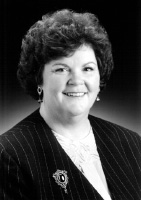
Have presentation, will travel
 KEEP put together a terrific new presentation on the need for a fiscal fix that protects our resource industries. The presentation, which includes this short two-minute video, is part of the KEEP “toolkit.” If you would like a member of KEEP to do a presentation to your employees, customers or friends, or if you would like to do your own presentation using the toolkit (packaged on a thumb drive), call us at 569-7070 or send us an email at info@keepalaskacompetitive.com
KEEP put together a terrific new presentation on the need for a fiscal fix that protects our resource industries. The presentation, which includes this short two-minute video, is part of the KEEP “toolkit.” If you would like a member of KEEP to do a presentation to your employees, customers or friends, or if you would like to do your own presentation using the toolkit (packaged on a thumb drive), call us at 569-7070 or send us an email at info@keepalaskacompetitive.com
When we think it can’t get worse …

House Resources ignored the hours and hours of public and industry testimony against HB 111 and sent a revised version on to House Finance, which held its first hearing on it Monday.
While this Committee Substitute (CS) adjusts a few of the most onerous provisions of the original bill, it adds a new bureaucratic quagmire that requires the Department of Natural Resources (DNR) to preapprove all oil and gas expenditures before they could qualify for a potential net operating loss.
As AOGA explains it, “the new regulations will mean almost every penny of every proposed investment by the state’s largest private-sector industry would need to be pre-approved by the State of Alaska before the expenditure could happen. … This new process, yet to be identified or truly vetted, will add tremendous burden and uncertainty.” Click here for the AOGA press release.
A public hearing is scheduled for 10 a.m. Saturday, March 25. Please take the time to testify.
Here’s how.
Or call or email the House Finance members:
Neal Foster
Paul Seaton
Les Gara
Jason Grenn
David Guttenberg
Scott Kawasaki
Dan Ortiz
Lance Pruitt
Steve Thompson
Tammie Wilson
Cathy Tilton
Mark Neuman
Louise Stutes
Here are some new points to make:
- The CS is an ill-conceived policy which would further damage Alaska’s economy by increasing taxes on the state’s largest private-sector industry and creating one of the largest regulatory processes in state history.
- The CS will push Alaska to the bottom of the competitive rung and will drive away new investment dollars, forcing more job loss, deceasing oil production and deterring investment in Alaska’s oil fields.
- This new process defies common sense. Due to a variety of factors, such as the price of oil, the industry does not know at the time of the expenditure if they will suffer a net operating loss.
- There was no direct testimony or feedback from DNR, only an “indeterminate fiscal note” that predicts the impact “would be minimal to significant.”
- Who knows how this new process would work, how long it would take and no discussion of how and who could appeal DNR decisions?
- Local governments, Native corporations, businesses big and small and individual Alaskans all spoke out in recent weeks to tell their elected officials to stop trying to change a tax policy that’s working for Alaska.
- Alaska cannot increase oil production by increasing taxes. Alaska cannot tax away the industry’s incentive to invest and still expect to have a sustainable economy.
- Increasing the minimum tax rate, and reducing the per-barrel credit, effectively raises and makes fundamental changes to the voter-approved production tax policy.
- While it is tempting to collect every dollar possible from the oil industry through increased taxation, doing so makes Alaska projects less competitive with those elsewhere and robs the companies of the investment capital they require to expand existing fields and discover new ones. In the long run, increasing taxes on the industry will do more harm to Alaska’s economy. Conversely, more investment means more production, more revenue for the state and more jobs for Alaskans.
- Alaska cannot control the price of oil, but it can control what kind of business climate we create here – one that encourages continued investment and more oil for TAPS.
- Oil tax reform in 2013 made Alaska more competitive and a more attractive place to invest. Oil companies have responded with over $5 billion in new projects. Alaska saw no production decline in 2014, a slight dip in 2015, followed by the first production uptick in 14 years in 2016.
- Adjustments to the cashable credit system may be necessary; however, they should be reformed in a way to keep incentives for investment and jobs in Alaska’s economy.
Gail has recipe for successFormer Alaska legislator Gail Phillips says Alaska has the ingredients for success – world-class geology, assets and infrastructure – and some of the best workers in the world. Now we just need to find the right recipe to keep Alaska’s investments safe and our economy growing. Alaska needs a balanced solutionKEEP Co-chair Jim Jansen took to the podium at last week's RDC breakfast, asking business leaders to lend their voices to the groundswell of support for a balanced solution to Alaska’s fiscal problems. |
Join us
|
 |
 |
P.O. Box 220884, Anchorage, AK 99522 | 907.569.7070 | keepalaskacompetitive.com
View web version | Unsubscribe
